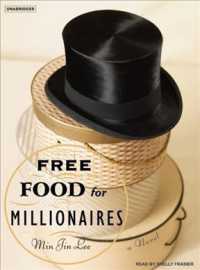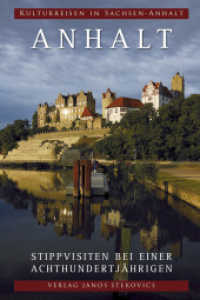Full Description
Learn how to enact justice-oriented pedagogy and foster students' critical engagement in today's history classroom. Over the past 2 decades, various scholars have rightfully argued that we need to teach students to "think like a historian" or "think like a democratic citizen." In this book, the authors advocate for cultivating activist thinking in the history classroom. Teachers can use Teaching History for Justice to show students how activism was used in the past to seek justice, how past social movements connect to the present, and how democratic tools can be used to change society. The first section examines the theoretical and research foundation for "thinking like an activist" and outlines three related pedagogical concepts: social inquiry, critical multiculturalism, and transformative democratic citizenship. The second section presents vignettes based on the authors' studies of elementary, middle, and high school history teachers who engage in justice-oriented teaching practices.Book Features:
Outlines key components of justice-oriented history pedagogy for the history and social studies K-12 classroom.
Advocates for students to develop "thinking like an activist" in their approach to studying the past.
Contains research-based vignettes of four imagined teachers, providing examples of what teaching history for justice can look like in practice.
Includes descriptions of typical units of study in the discipline of history and how they can be reimagined to help students learn about movements and social change.
Contents
Contents (Tentative)
1. Centering Justice in Students' Study of the Past 1
Why Do We Need to Teach History for Justice? 2
Where Does Teaching History for Justice Originate? 8
How Do We Teach History for Justice? 11
Conclusion 15
2. Thinking Like an Activist 16
Approaches to History Education 19
Types of Thinking in History 20
Using Activist Theories to Understand History 24
Thinking Like an Activist Classroom Tool 30
3. Social Inquiry 32
Making Inquiries Social 33
Inquiries Through a Historical Thinking Lens 34
Inquiries Through a Democratic Citizenship Lens 35
Inquiries Through a Justice Lens 35
4. Critical Multiculturalism 41
with Taylor Collins, Framingham Public Schools 41
Making the Curriculum Multicultural and Critical 43
Critical Multiculturalism in Action 50
5. Transformative Democratic Citizenship 56
Studying a Political, but Nonpartisan, History 59
Studying a Political History That is Democratic and Multicultural 62
Transformative Democratic Citizenship in Action 67
6. U.S. History at the High School Level: Ms. María Lopez 73
History for Justice in the U.S. History Classroom 74
Ms. María Lopez's High School U.S. History Classroom 75
7. World History at the High School Level: Mr. Tom Kulig 90
with Maria R. Sequenzia, Framingham Public Schools 90
History for Justice in the World History Classroom 91
Mr. Tom Kulig's High School World History Classroom 93
8. Ancient World History at the Middle Level: Ms. Joyce Smith 105
with Neema Avashia, Boston Public Schools 105
History for Justice in the Ancient History Classroom 107
Ms. Joyce Smith's Middle School Ancient History Classroom 108
9. State and Local History at the Elementary Level: Mr. Frank Hashimoto 120
with Jennifer R. Bryson, Boston University 120
History for Justice in the State and Local History Classroom 122
Mr. Hashimoto's Elementary School State and Local History Classroom 124
10. Overcoming Barriers 132
Overcoming the Barriers to History for Justice 133
Conclusion 140
References 141
About the Authors and Contributors 159
Index 161








